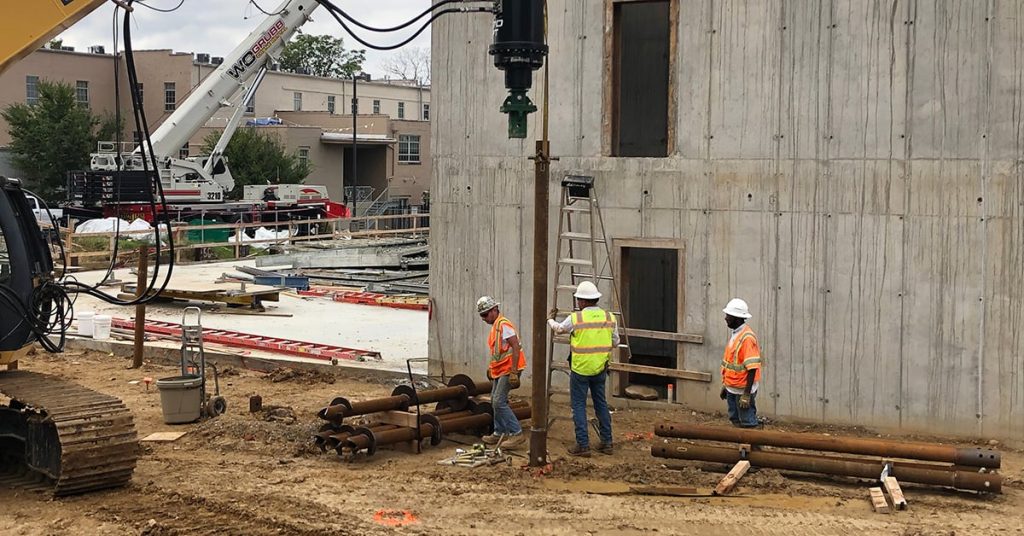Building upward in a city like Toronto is no simple task. Every tower, office block, or mixed-use development depends on what lies beneath the surface. Stability, longevity, and safety all begin with the foundation. In recent years, one technology has steadily moved from niche applications to mainstream use: Helical Pile Foundations in Toronto. While many still associate them with small-scale residential builds, these engineered systems are proving essential in the world of high-rise and commercial construction.
Why Foundation Choice Matters in a Dense Urban Core
Toronto’s skyline is constantly evolving, but it sits on a mix of soil conditions—from compacted clay to loose fill near the waterfront. Traditional deep foundation methods like caissons or driven piles require heavy machinery and generate noise, vibration, and disruption. In a city where projects often sit next to operating businesses, transit lines, and heritage properties, the choice of foundation is about more than load-bearing capacity—it’s also about feasibility and community impact.
The Science Behind Helical Piles
Helical piles are steel shafts fitted with helix-shaped plates that are rotated into the ground. The design works much like a screw, creating both end-bearing and skin friction resistance. For engineers, this means predictable performance with real-time torque monitoring during installation. For contractors, it means faster schedules and lower site disruption. This combination makes them especially attractive for projects in crowded downtown areas.
Speed of Installation in Commercial Builds
Time is money in the commercial sector. Every week shaved off a construction schedule reduces financing costs and accelerates revenue generation. Helical piles can be installed in virtually any weather, with no curing period required. High-rise developers in Toronto increasingly use them for elevator shafts, parking structures, and temporary shoring because the foundation work can progress while other trades mobilize.
Noise and Vibration Control in Urban Neighbourhoods
Unlike driven piles, which require heavy impact hammers, helical piles are installed using hydraulic torque. This dramatically reduces vibration transfer to nearby structures—a critical factor when projects border hospitals, transit tunnels, or older masonry buildings. Reduced vibration also lowers the risk of damage claims, which can otherwise become costly legal battles.
Design Flexibility for High-Rise Structures
Modern high-rises often include complex footprints with podiums, underground parking, and mixed-use components. Helical piles offer flexibility because they can be installed vertically or at an angle, adjusted for varying loads, and easily integrated with concrete caps. Engineers can adapt the foundation system to irregular building shapes without the need for over-engineered deep concrete pours.
Sustainability and Environmental Advantages
With growing pressure for sustainable building practices, foundations are no exception. Helical piles require less excavation and produce minimal spoil compared to traditional caissons. This reduces trucking requirements and landfill waste. In some cases, piles can even be removed and reused—making them a fit for temporary structures such as event venues or modular office setups.
Overcoming Toronto’s Soil Challenges
Toronto’s waterfront developments, in particular, sit on fill material that can vary widely in density and composition. Helical piles thrive in these conditions because their load capacity is verified during installation. If torque resistance indicates insufficient capacity, extensions can be added to reach more stable soil layers. This adaptability gives developers confidence in areas where soil reports may not tell the full story.
Reducing Risk for Investors and Stakeholders
For investors, delays or failures at the foundation stage are the most feared risks. Helical pile systems help mitigate this by providing engineers with real-time data on capacity and performance. The reduced risk of unexpected soil challenges translates to more predictable budgets and fewer change orders—key factors when multiple stakeholders are funding a high-rise project.
Case Studies in Application
Across Toronto, helical piles are already supporting everything from office towers to commercial plazas. Developers use them for underpinning existing structures during expansions, supporting crane pads for high-rise construction, and securing retaining walls along dense urban corridors. Their proven track record is accelerating adoption beyond residential into some of the city’s largest commercial projects.
Looking Ahead: The Future of Helical Piles in Toronto
As Toronto continues to grow vertically, foundation technologies must evolve with it. Helical piles provide a balance of speed, strength, and sustainability that aligns with the needs of modern developers. They reduce disruption in the city core, adapt to complex geotechnical conditions, and support ambitious architectural designs. For high-rise and commercial builders, they’re not just an alternative—they’re becoming the standard.







